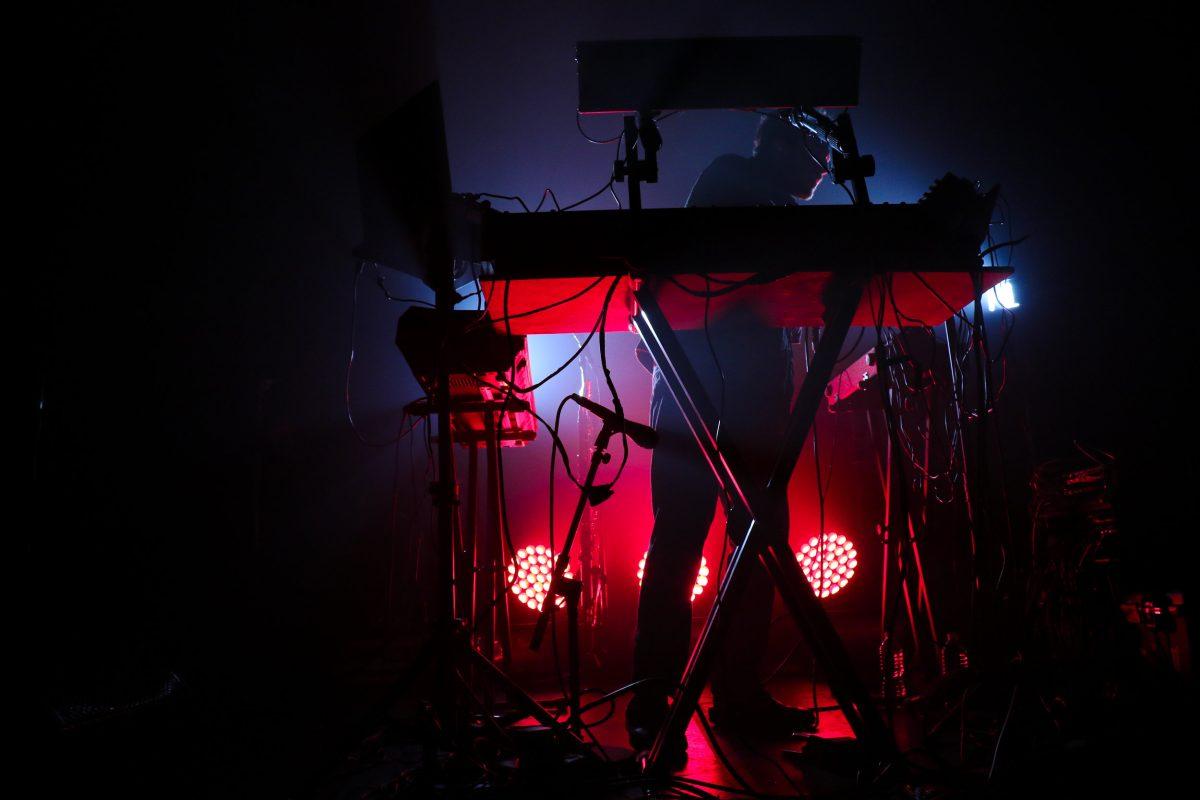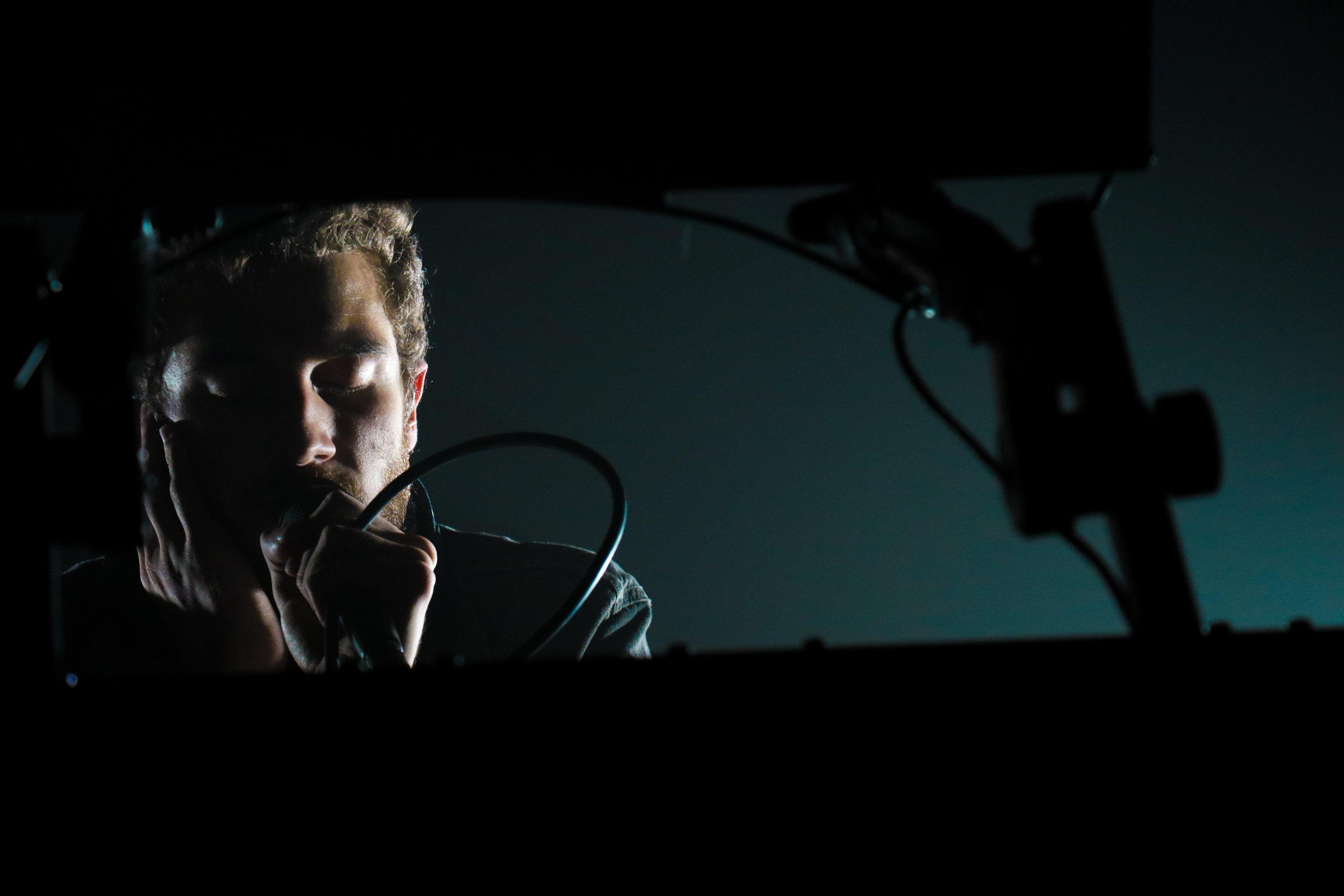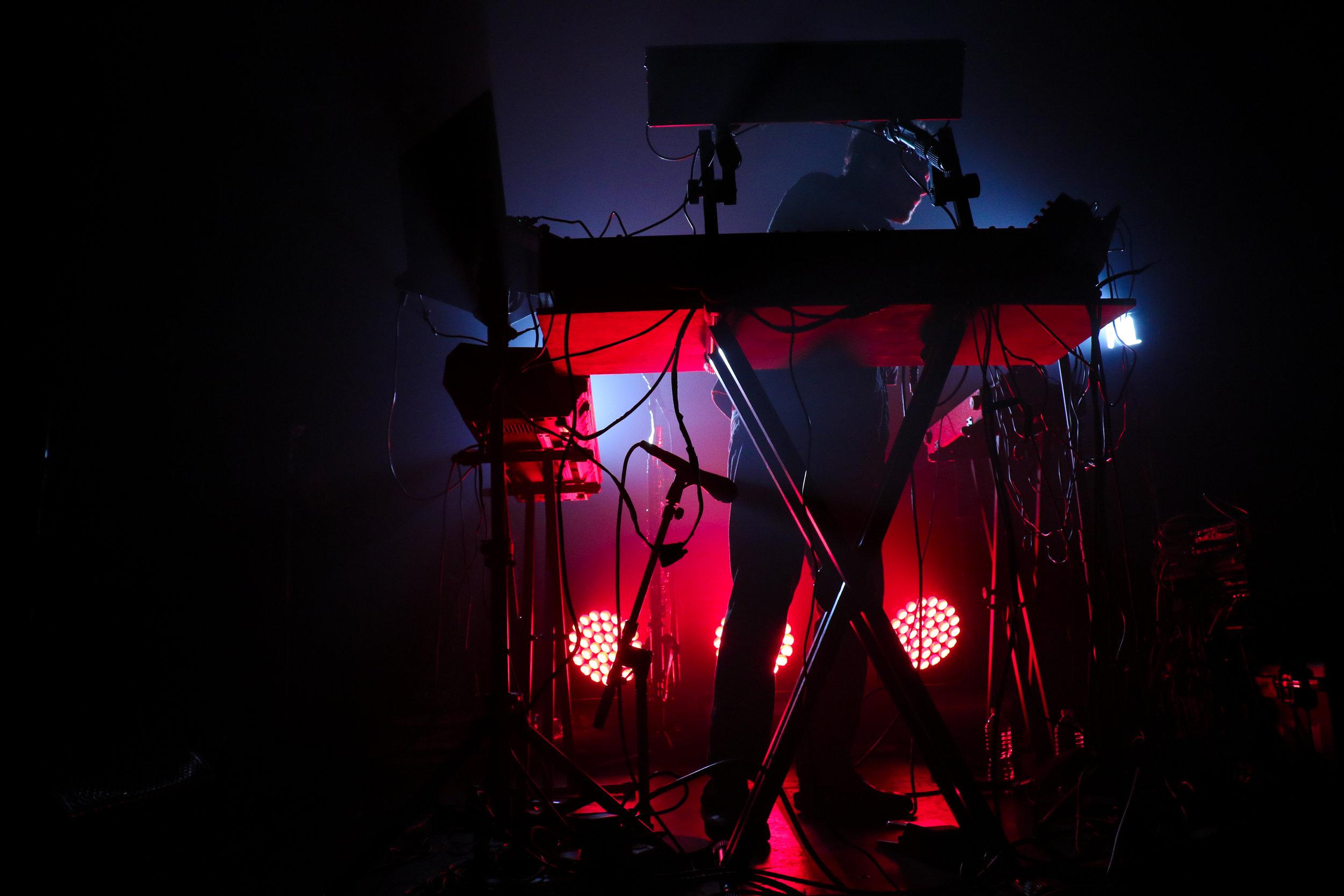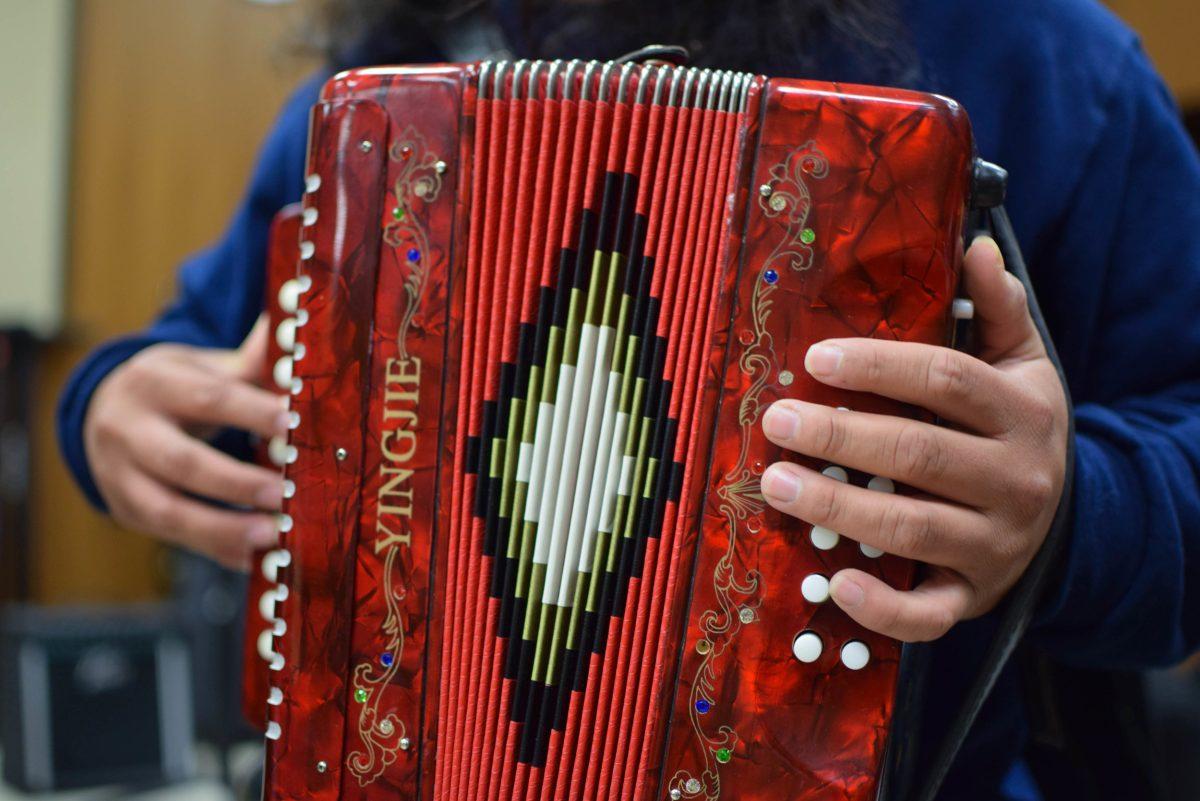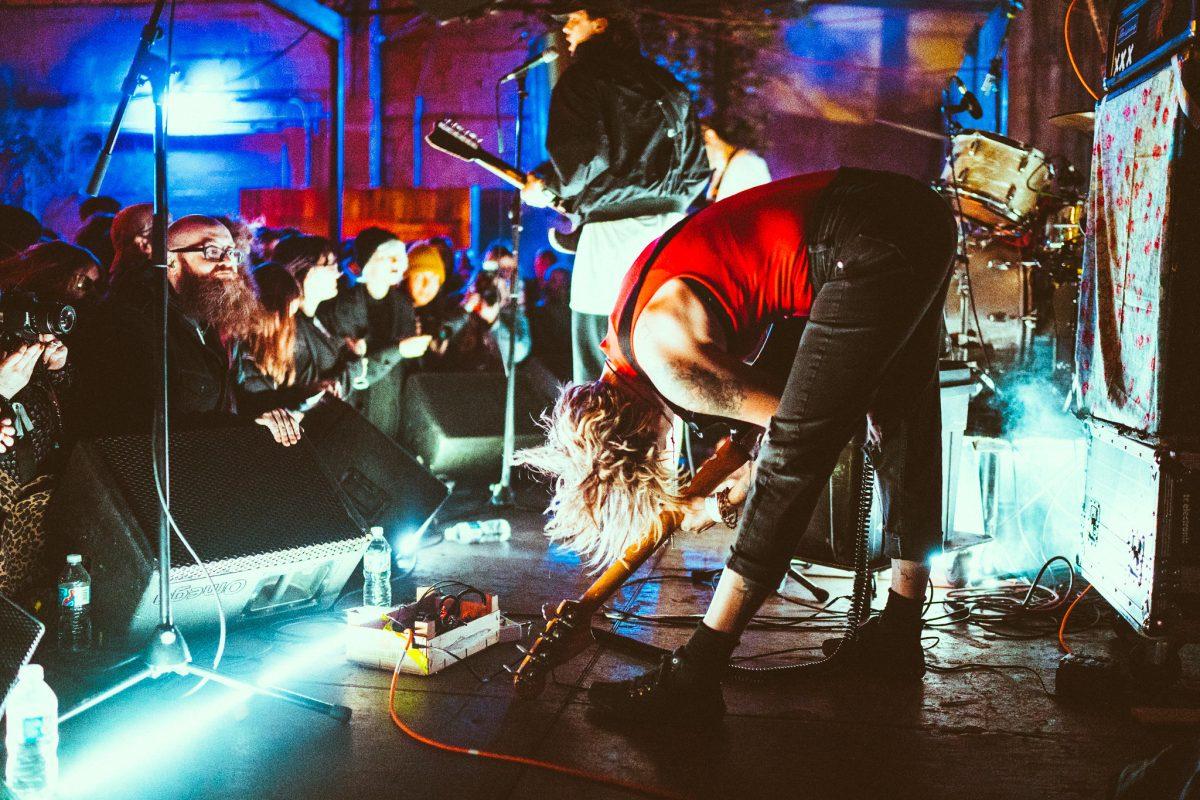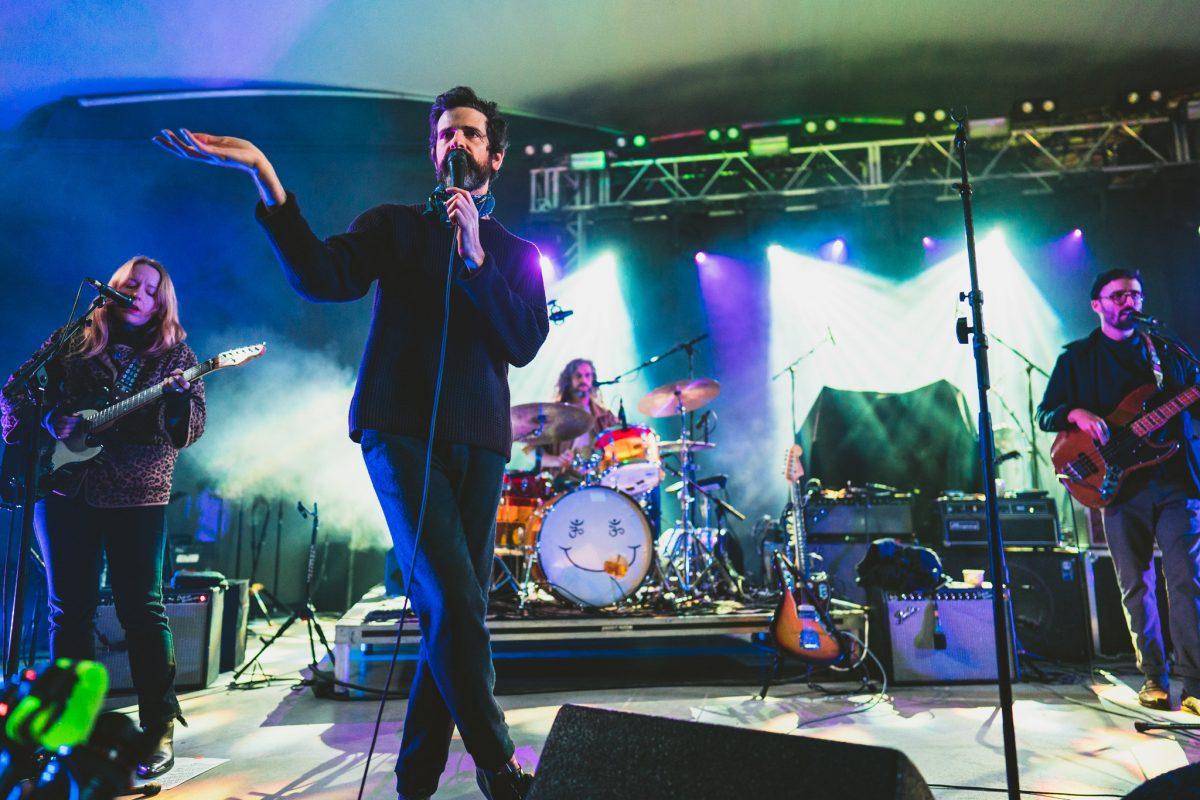The fog slowly cleared, hushing conversations and revealing a dimly lit figure on the stage of Emo’s Austin. The sea of attendees craned their necks to see if this figure was the promised opener or Nicolas Jaar himself.
Story by Karthik Bala
Photos by Miranda Chiechi
When the ominous synthesizers started playing, everyone knew it was him. The New York-based genre defying wizard picked up a saxophone, and after a dramatic pause, belted dissonant notes over the slowly intensifying background noise. The harsh yet captivating clamor evolved into a bebop solo and layers of arpeggios joined the loud groan of synthesizers.
Chilean-American artist Nicolas Jaar sings one of the six songs at his set at Emo’s.
Everyone was silent. I came in expecting some of Jaar’s trademark clicks and pops, strange samples of foreign conversations and the occasional groovy bassline. In fact, I was a little nervous about being bored. I usually listen to Jaar while doing homework. In the moment of chaos between saxophone and synthesizers, I felt like he was leading all of Emo’s into battle.
The jarring introduction smoothly progressed into the beginning of “The Three Sides of Audrey.” The sparse beginning of the track provided a brief moment of contemplation for the audience, before they began to cheer. As the song’s buildup returned , everyone sank back into intent stares. Jaar is a master of building tension, and as the beautiful texture of clicks and breathing and drones dropped into visceral, body rumbling bass, my prior expectations were shattered.
While his formula for the first half of the concert– experimental refrain leading into synthesizer buildup followed by booming drop –was clear by the third or fourth song, it’s a formula neither I nor the audience seemed to tire of. The second half featured his more straightforward, danceable tunes, such as “A time for us” and “El Bandido”.
Nicolas Jaar combines rhythms from various cultures to create his electronic music.
Steadier house tracks featured the standard EDM setup of pulsating red and blue lights. More tranquil tracks were simplistically lit. There was a single white light behind Jaar, creating an almost holy aura around him and an intimate environment during the experimental sections and buildups. This persisted for most of the first half, perfectly complementing the more introspective sections.
The second half of the concert was a slight decline from the first. The house jams might have been more fun if the crowd was moving, but judging by the head bobs and light swaying, everyone was still recovering from the sonic assault they had just witnessed.
In the minutes leading up to the finale, the saxophone made a return. These sections were my favorites because of what happened between the songs– the intense build-ups, dramatic pauses and on-the-fly additions and improvisations.
Jaar concluded the explosion of synthesizers with a quick wave goodbye and left without saying a single word.































